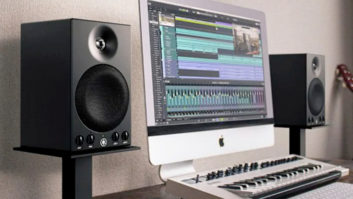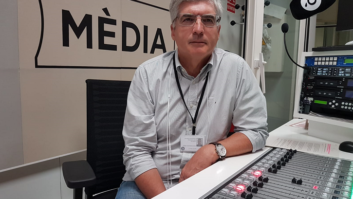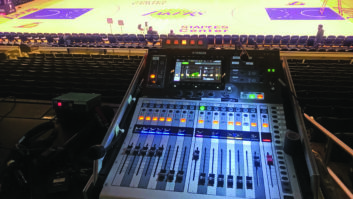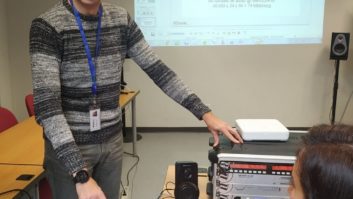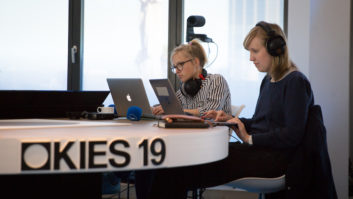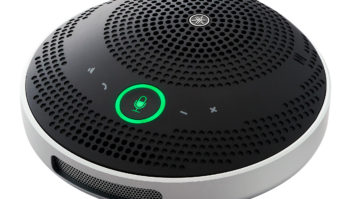Radio stations are comprised of every make and model of staff member. Some are creatively minded and some are wired for practicality.
Engineers fit into this radio dynamic in a unique way. They are generally forced to play both roles.

Planning and designing a new AoIP system is practical. Keeping track of EAS logs? Practical. But then Friday night rolls around, and the station is hosting a jazz combo performance downtown. That’s when the engineer starts thinking creatively, and he needs good tools to produce a memorable product.
The designers at Yamaha gave this some thought when they developed the TF3 Digital Mixing Console. It was built primarily for FOH mixing, and it can be operated efficiently by nearly anyone with cursory mixing experience. It’s stuffed full of popular features that a broadcast engineer can access quickly and efficiently.
FIRST THINGS FIRST
I’ve used several different makes and models of consoles for live sound jobs and recording gigs over the years and have yet to find a manufacturer that builds better head amps than Yamaha.

The TF3 uses the same preamp technology that is built into all of the Steinberg products. This effectively means the TF3 is loaded with discreet Class A preamps that provide ultralow distortion, plenty of gain and a low noise floor. A Shure SM58 or a Neumann U 87 will always sound excellent on this console.
The TF3 has 24 motorized faders that each include select, cue and on buttons. Instead of sticking a scribble strip tape above the fader bank, The TF3 boasts easy-to-read, high-resolution LCD screens and multicolored LED indicators above each fader. The LCD screens display input number, input name and other pertinent settings relative to each fader. The LEDs are for color-coding the faders using any of eight colors.
The back of the TF3 is simple and intuitive. Twenty-four Neutrik Combo Series jacks facilitate three-pin XLR or 1/4-inch TRS (and TS) input connections. Outputs are assigned to any of the 16 omni outputs housed on male Neutrik XLR jacks.
The omni design is a Yamaha feature allows the user to assign any output function to any physical output. There is not a dedicated bank of AUX outputs, for example. This is especially handy because most professional audio snakes use female XLR plugs for stage returns. Or for permanent studio installations, a combination of XLR and 1/4-inch wiring isn’t necessary. All the outputs are one XLR format.
The back of the TF3 also has two RCA inputs for Stereo 1 and Stereo 2. This is useful for playing music from a laptop, iPad or any unbalanced source. A 1/4-inch footswitch jack allows for activating any of several TF3 functions with a pedal. As an example, functions such as cueing a specific channel or recalling a scene stored in the console can be done hands free. The back panel has a USB jack for connection to a Mac or PC and an RJ-45 network connection for computer configuration and AoIP.
TAKE THE LEAP
Historically, the jump from analog mixing to digital mixing was quite a leap. Digital consoles were designed with two caveats. Much of the design was virtual in nature. The traditional channel strip disappeared and was replaced by a common display or channel strip in the middle of the console.

Anyone new to digital consoles needed to have considerable experience behind analog desks. This was generally due to understanding signal flow. Once the concept of signal flow was established, digital mixing consoles weren’t so hard to learn.
When I unboxed the TF3, I saw what I expected: Lots of faders, a few buttons and a display in the middle. Knowing nothing about the TF3, I was excited to see what happened when it powered up.
My original goal was to set up the TF3 for a network sports broadcast. The setup I had in mind included eight on-air members, a producer, two playout devices and twelve stadium effects mics and feeds. This also included separate headset mixes and IFB mixes.
In less than one hour I had the TF3 ready to go on the air without ever having opened the user’s manual. This was a key factor. Yamaha boasts the simplicity and intuition built in to the TF3, and I wanted to see it for myself.
FORM AND FUNCTION?
Ease-of-use was a design priority with novice engineers in mind. However, the TF3 still houses large-format console features. Function wasn’t sacrificed for the sake of making it easy to use.

Keep in mind that the TF3 is free of typical individual channel strips. Head amp gain, EQ, aux sends, pan and other familiar functions are all handled via the touch screen display on the TF3 bridge. The touch screen is highly functional and is the window into each working part inside the TF3. If the user has a cursory understanding of typical mixing necessities, the touch screen is easy to navigate.
For example, consider “one-knob vocal mode.” Upon selecting a channel and navigating to the EQ settings, the user finds a 20 Hz to 20 kHz parametric equalizer. A novice user may have trouble with the concept of parametric EQ. Plus dragging icons on the touchscreen to adjust frequencies and Qs may be overwhelming.
One knob vocal mode, however, allows the user to use the physical “touch and turn” knob on the TF3 bridge. As the knob is turned, the parametric EQ applies a 100 Hz high-pass filter. Turn the knob some more and 300 Hz is rolled off. As the knob is turned further still, high frequencies and then mid highs are bumped up.

See the pattern?
These are typical EQ adjustments made to vocal mics. The same feature applies to the compression settings as well. While the user can use the touch screen to craft any and every compression scenario, “one-knob vocal mode” simultaneously adjusts threshold, ratio, attack, release and knee settings for basic, comprehensive adjustments.
The TF3 allows users to label each input fader based on the characteristics of the source. Eight categories ranging anywhere from headsets, wireless vocal mics, horns, strings and DI boxes are available for selecting icons for labeling channels. Plus, each input can be given a name up to eight characters. This information appears on the scribble strip LCD displays and the touch screen.
If the TF3 is being sent out with a novice engineer, all of the parameters can be preset for him.
FADE TO
The 24 faders on the TF3 are multifunctional. Depending on the fader bank settings, the faders are used to control inputs, AUX levels and DCA levels.

As opposed to traditional sub mix levels found on small to medium-format consoles, DCAs, or digital control amplifiers are employed on the TF3, and for good reason.
Harkening back to the analog consoles, voltage control amplifiers controlled the voltage levels on input faders. Instead of routing input signals through a sub mix, VCAs remotely controlled the voltage level on the faders. This reduced noise in the signal path when attempting to group inputs. DCAs operate exactly the same way and give the TF3 the same functionality found on its large format cousins.
When installed on a local IP network, the TF3 can be used in conjunction with TF Editor and Stage Mix for more advanced setup and configuration and monitoring control. TF Editor puts TF3 programming and control on a Mac or PC. Stage Mix is an iPad app that talent on stage can use to create individual monitor mixes. Any DAW or recording software can be used with the downloadable ASIO driver via USB connection to the computer for multitracking. TF3 ships with Nuendo Live.
The TF3 has 24 physical inputs and Channels 25–40 are allocated for DAW playback or return channels from the available Tio 1608-D I/O rack slot setup. The Tio 1608 is a 16-in, 8-out 2RU AoIP interface that is Dante compatible. In Dante environments, all the TF3 inputs and outputs are usable throughout the entire audio plant via AoIP. The TF3 is well-suited for an in-house production installation.
In addition to the rear USB port, a port for an iPad and a USB stick (thumb drive) is situated on the meter bridge. This facilitates audio playback and recording as well. Files stored on the USB stick can be played through the TF3 and the mains or aux busses can be routed to the USB device for basic recording. A final thought: The headphone jack is on the meter bridge, which means you won’t hit the plug-in with your leg!
The TF3 is a feature-rich tool that would require a lengthy and exhaustive review in order to cover all of its available resources. The primary take-away that applies to radio engineers concerns the simplicity and complexity that is wrapped up in one mixer. A novice sound technician can use the TF3 and he has economical tools needed to complete the task. On the other hand, a well-seasoned engineer can use the full complement of TF3 functions and enjoy the benefits of large-format console features.
Wygal is the operations manager for The Journey Radio Network in Virginia.







